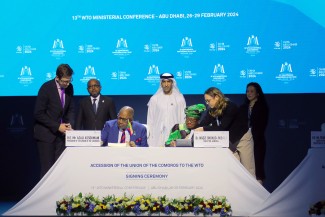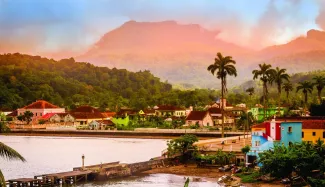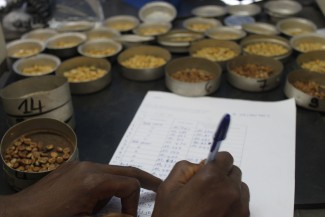Vanuatu, a series of small islands surrounded by clear, blue water in the South Pacific, is a natural tourist attraction – and its economy depends heavily on the sector, which employs 55 percent of Vanuatu’s labor force and represents 65 percent of its gross domestic product (GDP).
It's popularity with tourists, particularly from nearby New Zealand and Australia, had been growing steadily in the 1990s and 2000s. With only around 250,000 residents on the archipelago, the island welcomed over 100,000 tourists in 2014.
But in 2015, the country's tourism sector came to an abrupt halt.
CYCLONE PAM
Like many small island states, Vanuatu and its economy are particularly vulnerable to extreme weather events and climate change. In March 2015, a category 5 tropical storm, known as Cyclone Pam, ripped through the archipelago, destroying 90 percent of the buildings—including the Port Vila seafront—and leaving dozens dead.
Cyclone Pam was devastating for the country's tourism, and the jobs that depended on it.
Aid For Trade
The Enhanced Integrated Framework (EIF), housed within the World Trade Organization, works in partnership with the governments of 47 Least Developed Countries (LDCs), including Vanuatu, to position them for long-term economic growth and poverty reduction.
A key part of that equation is working side by side with the local governments to identify the barriers to trade and export that prevent countries from connecting to an increasingly global economy—whether that's overcoming sanitation requirements for food exports or repairing poor infrastructure to attract more tourists.
EIF's interventions aren't project-based. Rather, they strengthen the LDC's capacity to build their institutions and partnerships.
In Vanuatu's case, EIF provided strategic guidance and support for Vanuatu's tourism sector, helping to identify the kind of interventions that could revitalize the sector.
REVIVING PORT VILA
After Cyclone Pam, with the support of the Government of New Zealand and EIF, Vanuatu was able to rebuild and transform the capital's seafront in Port Vila. The locals call it "the beautification project."
The area--which officially opened in September 2018-- is now a functional, safe, and attractive area for visitors and the seafront wall has been reinforced to protect from future storms.
The markets near the seafront have been remodelled to create more opportunities for local producers and traders, many of them women who benefit directly from tourism.
Following this investment, the government expects a 36 percent increase in tourism arrivals by sea and air. Over the long term, EIF's goal is to ensure Vanuatu and other LDCs are connected to the world—through trade and tourism—in a way that drives poverty reduction and economic growth.
ROSALIE'S STORY
Rosalie Vatu is a "mama"—a local artisan and trader—who has personally benefited from the beautification project. Watch her story.
If you would like to reuse any material published here, please let us know by sending an email to EIF Communications: eifcommunications@wto.org.



